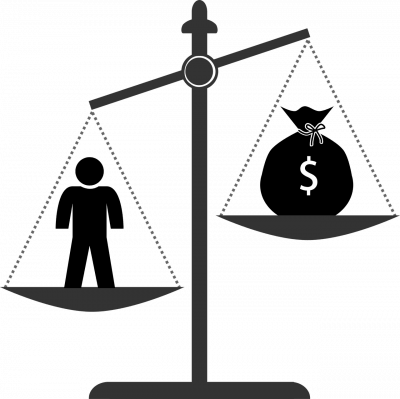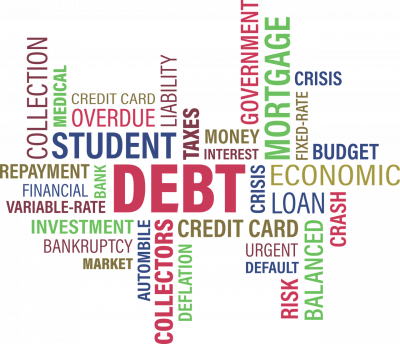Explaining Personal Insolvency and the Law
As previously explained, the ability of bankruptcy to offer debt relief and a “fresh start” depends on the shape of bankruptcy law. Inevitably there must be a balancing of costs and benefits as the law mediates often-conflicting policy aims: to ensure that creditors can be repaid as much as possible while seeking to offer financial rehabilitation to the insolvent debtor. Whether entering a personal insolvency procedure is of benefit to any given individual in financial difficulty requires consideration of how the costs and benefits apply to her situation. This post outlines the central features of the current personal insolvency system in England and Wales, and highlights key elements of this calculation in the context of the financial difficulties currently facing leaseholders.
Posted:
Time to read:
Bankruptcy and Debt Relief Orders

Three alternative procedures are available to insolvent individuals – Bankruptcy, the Debt Relief Order (DRO), and the Individual Voluntary Arrangement (IVA). A key contrast is that while rules for the Bankruptcy and DRO procedures are set out in legislation, the terms of each IVA are in theory determined by negotiations between the debtor (represented by an Insolvency Practitioner (IP)) and her creditors. The IVA is therefore a “consensual” debt restructuring procedure, while Bankruptcy and DROs are procedures offering a statutory right to debt relief under clearly defined conditions.
The key common feature of the Bankruptcy and DRO procedures is that under both an insolvent individual usually receives a discharge or cancellation of her debts on the conclusion of a one-year waiting period. (Since the means-tested DRO is limited to “no income, no assets” cases, it has little relevance for leaseholders and is not discussed here). The Bankruptcy procedure involves an insolvent individual surrendering her surplus assets and income, and effectively the control over her financial affairs, in exchange for discharge from her debts. Both creditors and debtors can initiate bankruptcy proceedings, though the majority of ‘petitions’ are brought by debtors seeking relief (rather than creditors seeking to collect debts). It is now a largely administrative procedure. Individuals apply online (on payment of a £680 fee), and applications are decided and processed by an adjudicator operating under the government’s Insolvency Service. The adjudicator will usually declare the applicant bankrupt within a matter of days, unless some exceptional circumstances require otherwise.
While an individual is discharged from bankruptcy after one year, there is a possibility of her being required to make repayments to creditors from any surplus income for up to three years (under an “Income Payment Order” or “Income Payment Agreement”). The reality, however, is that the financial positions of people entering bankruptcy are so weak that only approximately 15-20% have sufficient disposable income to be required to make payments to creditors. An individual entering bankruptcy also loses control over her non-essential assets, which form part of the “insolvency estate” and are administered by the Official Receiver or bankruptcy trustee for the benefit of creditors. This means that non-essential assets are sold to generate proceeds for distribution among creditors. Reasonable household items and items necessary for an individual’s work are retained. Again, most people entering bankruptcy are suffering through such difficult circumstances that they lack any valuable assets – while data here are limited, one Insolvency Service report found that almost 80% of people entering bankruptcy own assets valued at less than £1,000.

The standard position under English law is that the home is not treated as an essential asset and a homeowner entering into bankruptcy must surrender her home, to be sold for the benefit of creditors. There is a one-year “grace period” during which she and her family may continue to live at home. Also, the property will usually be sold only where the debtor’s interest is worth more than £1,000, meaning that for debtors in ‘negative equity’, the property will generally not be sold in bankruptcy. In other cases, an option might also exist for a family member or other related individual to purchase the “equity” of the insolvent individual and so “buy her out” of the property. This again would avoid the home being sold. The lack of formal protection of homes in bankruptcy contrasts with the position in some other jurisdictions, and remains a major limitation of English law. This feature reduces considerably the extent to which bankruptcy is a viable debt relief option for homeowners. Its significance will vary, however, based on the circumstances of the homeowner contemplating insolvency, and the value of her stake in her home.
IVAs
The IVA is now the most commonly used insolvency procedure. It was introduced in the late 1980s with the intention that the procedure would be used primarily in high-end debt cases involving business debtors with complex affairs. Since the mid-2000s, however, the IVA has been redeveloped by commercial IVA firms into a mass-marketed consumer insolvency remedy. Recent years have seen its expansion into increasingly low-income client markets, and there have been regulatory investigations uncovering widespread misconduct and aggressive marketing practices in the sale of IVAs to financially struggling individuals. The UK Insolvency Service is currently reviewing this sector, with a view to regulatory reform.
Any relief provided under an IVA must be negotiated with her creditors by the debtor (through an “Insolvency Practitioner”, which usually means an IVA firm), and a debtor’s proposed repayment plan will only be accepted and become an IVA if 75% of creditors (in value) approve its terms. In practice, a protocol negotiated between IVA firms and creditors standardises IVA terms, and now common features apply in most cases. On average, IVAs tend to last for a period of 5-6 years, during which debtors make payments to creditors from their non-essential income, before the remaining (unsecured) debts are discharged. Debtors will also pay several thousand pounds in fees to an IVA firm throughout the course of the arrangement. Debtors with significant equity (usually above £5,000) in their homes are expected to use equity-release products to pay a lump sum to creditors from this equity.
Individuals entering into an IVA generally will keep their homes, however, and this would appear to be a chief attraction of the IVA as an alternative to Bankruptcy. This assumption must be treated with caution, however, since the limited available data suggest that only approximately 20% of IVA debtors appear to be homeowners – clearly the IVA is being used by – and sold to – financially troubled individuals who do not have homes to protect. It should be noted that IVA failure rates are high, with one third or more arrangements terminated without a debtor receiving a debt discharge. The completion of a long-term repayment plan spanning many years, under the threat of a 1-in-3 chance of failure, is a long route to a “fresh start”.
Insolvency Restrictions
Notwithstanding reforms in the early 2000s aimed to reduce the stigma of bankruptcy, there is a wide range of restrictions imposed on individuals entering insolvency, including rules of professional associations. Even with IVAs there may be implications stemming from how professional associations, employers, lenders, and credit reporting agencies decide to treat individuals who enter IVAs. These consequences are discussed in a subsequent post.
Conclusion

The debt relief and “fresh start” offered by personal insolvency law clearly comes at a high cost. For leaseholders in sound financial positions until hit with unforeseeable fire safety remediation costs, personal insolvency might involve simply losing too much. A beauty of personal insolvency law is its simplicity – if an individual is insolvent, the law states that she does not have to pay her debts. This works most effectively in typical situations of over-indebtedness, when households encounter problems across a range of different financial commitments, either due to an “income shock” or the effects of living long-term on a low income. Insolvency law does not ask questions as to whether these are “good” or “bad” debts; there is no obligation on the debtor to prove that she is particularly worthy of forgiveness, or that her lenders acted in a particularly blameworthy manner. Personal insolvency law operates a simple bright-line rule, and cancels the debts of anyone who is shown to be insolvent. This is an approach particularly appropriate in an economy dependent on high levels of household debt, where over-indebtedness is systemic rather than based on individual circumstances.
The situation of most leaseholders is very different to this classic scenario – here are households who were not encountering difficulty in their borrowings, and often have no problems except those relating to fire safety bills. Here it seems fitting to make an enquiry as to the nature of these debts, and to ask where liability should justly lie for remedying defects in the building of properties throughout the country. In such a case, there is a risk that personal insolvency might only provide the roughest of rough justice.
__________
How to cite this blog post (Harvard style)
Spooner, J. (2020). Explaining Personal Insolvency and the Law. Available at: https://www.law.ox.ac.uk/housing-after-grenfell/blog/2020/07/explaining-personal-insolvency-and-law (Accessed [date])
Keywords:
Share:
